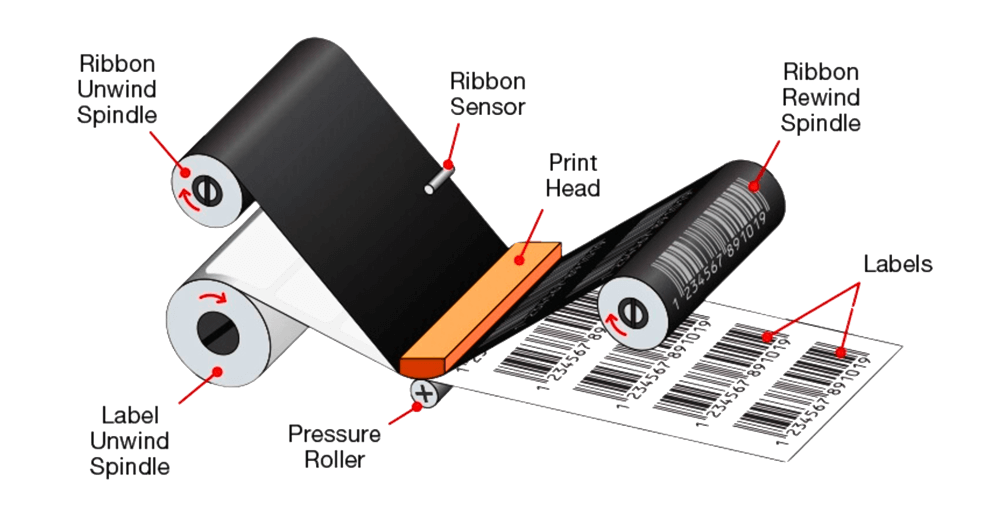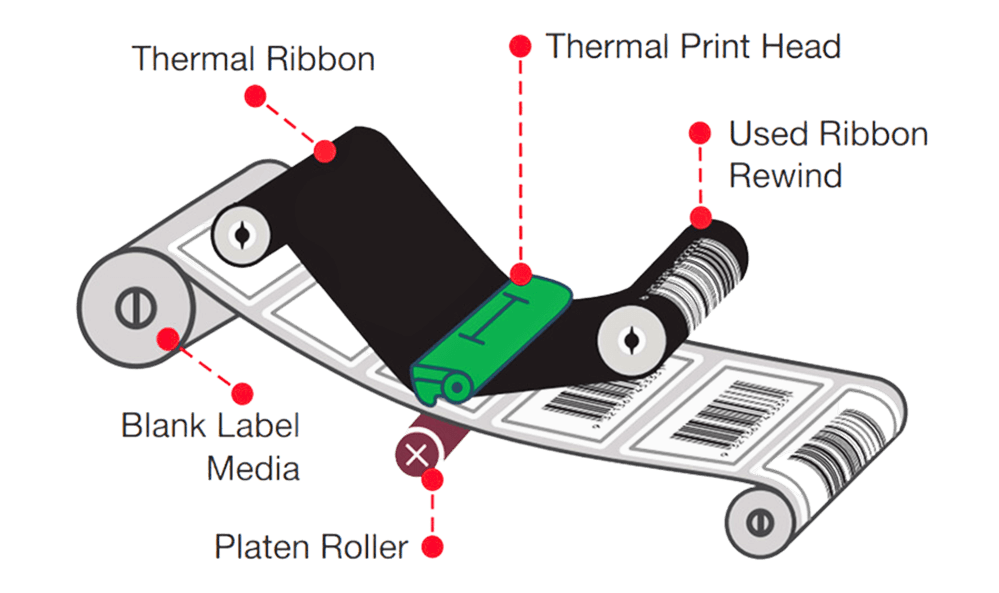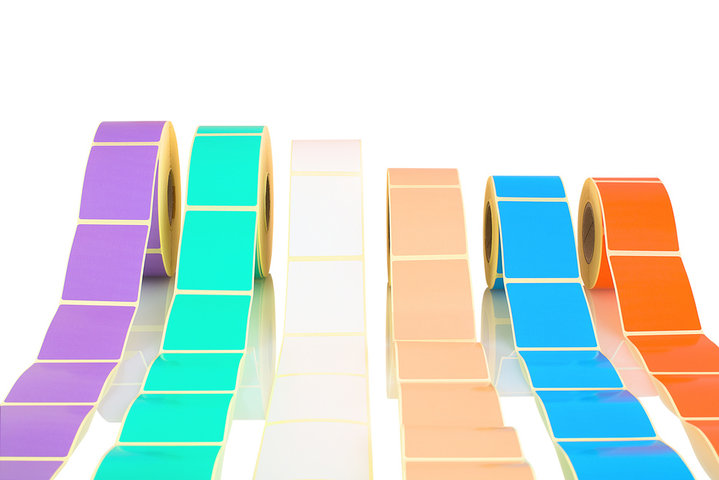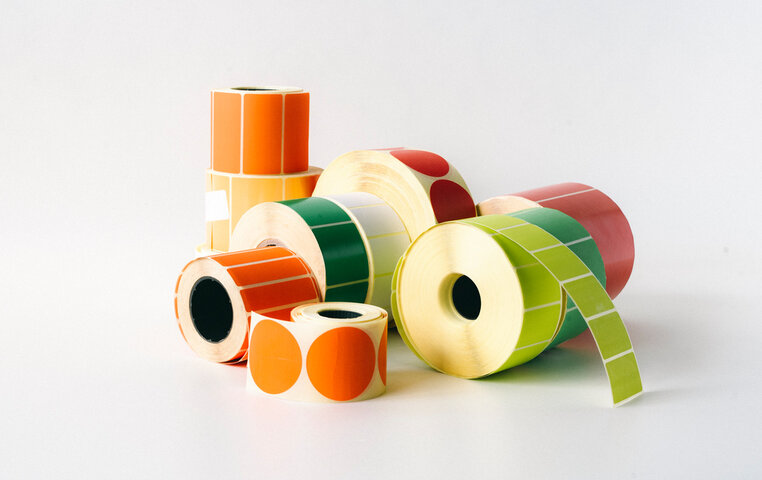
Ever wondered why some labels fade quickly while others last for years? Direct thermal labels and thermal transfer labels use different printing methods, and choosing the wrong one can lead to smudged barcodes, unreadable tags, or unnecessary costs. Whether you're shipping packages, labeling products, or tracking assets, selecting the right thermal label is essential for durability and efficiency.
In this post, we’ll explore the key differences between direct thermal printing and thermal transfer printing, their best use cases, and how to pick the perfect label for your needs. If you want long-lasting, high-quality labels that suit your business, keep reading!
Understanding Thermal Printing Methods
Thermal printing is a widely used technology for creating high-quality labels without using ink or toner. Instead, it relies on heat to produce images on label materials. The two main types of thermal printing—direct thermal printing and thermal transfer printing—offer different advantages depending on durability needs, environmental conditions, and cost considerations.
What Is Direct Thermal Printing?
Direct thermal printing works by applying heat from a thermal printhead to a chemically treated, heat-sensitive label. The heat activates the label's coating, which blackens in the exposed areas to form text or images. Because this process does not require ink, toner, or ribbons, it simplifies printing and reduces maintenance.

Cost-effective and low maintenance – Since direct thermal printers do not use ink or ribbons, the operational costs remain low. Businesses save on consumables, making it an economical choice for high-volume applications like shipping and logistics.
Fades over time – Direct thermal labels are sensitive to heat, light, and friction. Extended exposure can cause the label to darken or become unreadable, limiting its suitability for long-term labeling applications.
Best for short-term use – Due to its fading issues, direct thermal printing is ideal for labels that do not need to last more than six months. This includes shipping labels, retail receipts, visitor badges, and perishable food labels.
Limited material compatibility – Direct thermal printing only works with specially coated heat-sensitive materials, restricting options compared to other printing methods.
What Is Thermal Transfer Printing?
Thermal transfer printing uses a heated printhead to transfer ink from a ribbon onto the label surface. This creates a more durable, long-lasting print that resists moisture, chemicals, and extreme temperatures. The ability to print on different materials makes it versatile for industries requiring high-quality, permanent labels.

Superior durability – Unlike direct thermal labels, thermal transfer labels remain intact under exposure to sunlight, heat, and moisture. They are commonly used for applications that require long-term readability, such as asset tags, medical samples, and warehouse storage labels.
Compatible with various materials – Thermal transfer printers can print on paper, polyester, polypropylene, and other synthetic materials. This flexibility allows businesses to choose label materials suited to their specific needs, whether for indoor office labeling or harsh outdoor environments.
Requires ribbons and maintenance – While thermal transfer printing produces high-quality labels, it also involves higher costs. Ribbons must be replaced regularly, adding to the overall expenses. Additionally, maintaining ribbon alignment and tension requires more oversight than direct thermal printing.
High-resolution and customizable – Thermal transfer printers support multiple ribbon types, including wax, resin, and wax-resin blends. This allows for enhanced print quality, color printing, and resistance to smudging and abrasion.
Key Differences Between Direct Thermal and Thermal Transfer Labels
The choice between direct thermal and thermal transfer labels depends on factors like durability, print quality, and cost. Each method has distinct characteristics that determine its best use cases. Below, we explore their key differences in printing technology, lifespan, print clarity, cost, and material compatibility to help businesses make informed decisions.

1. Printing Technology
Thermal printing relies on heat to create images on labels, but the process differs significantly between direct thermal and thermal transfer methods.
Direct thermal printing applies heat directly to a specially coated, heat-sensitive label. The printhead selectively heats the material, causing it to darken and form images without ink or ribbons. This process is simple but limits material choices to heat-reactive paper or synthetics.
Thermal transfer printing uses a ribbon with a wax, resin, or wax-resin blend. Heat from the printhead melts the ink from the ribbon onto the label surface, creating a durable, long-lasting image. This method allows printing on a wide range of materials, including polyester, polypropylene, and coated paper.
2. Durability & Longevity
Label longevity is crucial for applications requiring permanent identification. Exposure to heat, moisture, friction, and chemicals affects each label type differently.
Direct thermal labels degrade over time, especially when exposed to heat, light, or abrasion. The chemical coating that reacts to heat continues to darken when exposed to external heat sources, leading to faded or illegible prints. These labels typically last six months or less, making them unsuitable for long-term tracking or harsh environments.
Thermal transfer labels offer superior durability. The ink, once transferred, becomes part of the label surface, making it resistant to UV exposure, water, chemicals, and abrasion. This method is widely used for asset tagging, product labeling, laboratory specimens, and outdoor applications where labels need to remain scannable for years.
Environmental resistance: Direct thermal labels fail in extreme conditions, while thermal transfer labels withstand high temperatures, harsh chemicals, and moisture-heavy environments.
3. Print Quality & Clarity
Both thermal printing methods produce high-resolution text, barcodes, and images, but their quality and longevity differ.
Direct thermal labels initially offer sharp, high-contrast prints, making them ideal for barcodes, receipts, and shipping labels. However, their clarity deteriorates over time due to environmental exposure. Friction or contact with heat can cause smudging, reducing barcode readability.
Thermal transfer labels maintain consistent print quality for years. The ink does not fade or smudge easily, ensuring long-term readability. This makes thermal transfer the preferred choice for applications requiring high-contrast, scannable barcodes, such as inventory management, compliance labeling, and industrial tracking.
Fading and smudging: Direct thermal labels are highly susceptible to print degradation, whereas thermal transfer labels resist fading under UV exposure, moisture, or frequent handling.
4. Cost Considerations
The total cost of ownership includes initial investment, supplies, and long-term maintenance.
| Cost Factor | Direct Thermal Printing | Thermal Transfer Printing |
| Upfront Cost | Lower (no ribbon required) | Higher (ribbon required) |
| Printer Cost | Generally more affordable | Can be more expensive upfront |
| Supply Costs | Lower (only label rolls needed) | Higher due to ribbon expenses |
| Maintenance | Minimal (fewer parts to replace) | Requires ribbon changes and upkeep |
| Long-Term Cost | Can increase due to frequent reprinting | More cost-effective for durable labels |
Direct thermal printing has a lower initial cost because it does not require ribbons. This makes it attractive for businesses with high-volume, short-term labeling needs like shipping and logistics.
Thermal transfer printing involves higher supply costs due to ribbon usage, but its labels last longer, reducing reprinting costs. Over time, businesses using long-term labeling applications will benefit from fewer replacements and lower total expenses.
5. Material Compatibility
Label material determines durability and application versatility. Thermal transfer printing provides more options than direct thermal.
Direct thermal labels are limited to heat-sensitive paper or synthetics. These materials work well for shipping, retail, and receipt printing, but their fragility restricts them from industrial or outdoor use.
Thermal transfer labels can be printed on a wide variety of materials, including:
Paper – Cost-effective for everyday use.
Polypropylene – Offers moisture resistance.
Polyester – Highly durable, UV and chemical resistant.
Specialty synthetics – Used for cold storage, laboratory specimens, and industrial tagging.
Customization options: Direct thermal labels are typically black-and-white only, whereas thermal transfer labels can use colored ribbons for branding, categorization, or compliance requirements.
Summary of Key Differences
| Feature | Direct Thermal Labels | Thermal Transfer Labels |
| Printing Process | Heat-sensitive label, no ribbon | Ink transferred from ribbon |
| Durability | Fades in heat, friction, and light | Long-lasting, resists environmental damage |
| Material Options | Limited to thermal paper | Works on paper, plastic, polyester |
| Resistance | Prone to smudging and fading | Resists chemicals, heat, and moisture |
| Best Applications | Short-term labels (shipping, receipts) | Long-term labels (inventory, asset tracking) |
| Cost Efficiency | Cheaper upfront but may need frequent replacements | Higher cost initially but lower long-term expenses |
Choosing the Right Thermal Label Printer
Factors to Consider
Printing volume & frequency drives long-term costs. Direct thermal printers work best for low-to-medium output (50-500 labels/day) like retail receipts or short-term shipping tags. Their simple design reduces maintenance but struggles with continuous high-volume jobs. Thermal transfer handles 1,000+ labels/day efficiently—ideal for warehouses printing durable asset tags daily.

| Factor | Direct Thermal | Thermal Transfer |
| Max Daily Output | 500 labels | 2,000+ labels |
| Maintenance Cost | $50/year (printheads) | $30/year (ribbons) |
| Energy Use | Low | Moderate |
Durability requirements depend on environmental exposure. Direct thermal labels fade if left in sunlight for weeks or exposed to oils/chemicals. Thermal transfer labels withstand UV rays, moisture, and abrasion. For example, logistics companies use thermal transfer for outdoor equipment tags lasting 5+ years.
Cost vs. performance trade-offs balance upfront and recurring expenses. Direct thermal printers cost $200-$500 upfront with no ribbon purchases. Thermal transfer models start at $800 but offer lower per-label costs for high-volume users. Factories often choose thermal transfer to avoid relabeling expenses from faded barcodes.
Printer Compatibility
Direct thermal-only printers like the Dymo LabelWriter 450 Turbo are lightweight and portable. They print only on heat-sensitive paper or synthetic labels, limiting material options but reducing operational complexity.
Dual-mode printers (e.g., Zebra ZD500) support both technologies. They cost 30% more than single-mode devices but let users switch between direct thermal for temporary labels and thermal transfer for permanent ones.
| Printer Type | Best For | Limitations |
| Direct Thermal | Mobile teams, retail | Limited material options |
| Thermal Transfer | Industrial settings | Higher ribbon costs |
| Dual-Mode | Mixed-use facilities | Steep learning curve |
Recommended models:
Entry-level: Brother QL-1100 (direct thermal) for small businesses.
Mid-range: SATO CT4-LX (thermal transfer) for chemical-resistant labels.
Advanced: Honeywell PM45 Dual-Mode for supply chain flexibility.
Environmental Impact & Sustainability
Recycling and Waste Considerations
Ribbon waste in thermal transfer printing contributes to plastic pollution. A mid-sized facility using 100 ribbon rolls/year generates 120kg of non-recyclable waste. Some brands now offer partial recycling programs—ARMOR’s “Ribbon Recovery” converts used ribbons into park benches.
Recyclability of direct thermal labels varies:
| Material | Recyclable? | Notes |
| Standard Thermal Paper | No (BPA coatings) | Banned in EU food labels |
| Phenol-Free Paper | Yes | Costs 15% more |
| Synthetic Films | Rarely | Requires special facilities |
Eco-Friendly Labeling Solutions
Linerless direct thermal labels remove backing paper waste. Brands like EcoLiner use 40% less material by printing on adhesive-coated rolls. They suit indoor applications like retail tags but lack outdoor durability.
Sustainable ribbon options include:
| Type | Material | Pros | Cons |
| BioRibbon | 30% plant-based resin | Reduces carbon footprint | 20% higher cost |
| Recycled Polyester | 50% post-consumer waste | Durable for industrial | Limited color options |
| Low-Melt Wax | Modified petroleum | Energy-efficient | Non-recyclable |
Energy-efficient printers with sleep modes (e.g., Toshiba B-EX4T1) cut power use by 25%. Pair them with solar-powered warehouses for maximum sustainability.

Conclusion
Direct thermal labels work best for short-term uses like shipping or receipts—they’re affordable but fade under heat/light. Thermal transfer lasts years, surviving water, chemicals, and UV exposure. Costs differ: direct thermal saves upfront, while thermal transfer lowers long-term expenses. Always prioritize label lifespan and environmental needs.
Choose direct thermal for quick, low-volume tasks. Pick thermal transfer for harsh conditions or permanent tracking. Pair your needs with the right technology, and consult experts to avoid wasted resources. Ready to optimize your labeling? Start by assessing durability and budget today.
FAQs
1. Do direct thermal labels fade over time?
Yes. Heat or sunlight speeds up fading. They last 6-12 months indoors but degrade faster outdoors. Don’t use them for long-term product labels.
2. Can I use thermal transfer labels in a direct thermal printer?
No. Thermal transfer needs ribbons to print. Direct thermal printers lack ribbon systems. Mixing them breaks printers or creates unusable labels.
3. Which printing method is more cost-effective for a small business?
Direct thermal costs less upfront ($200-$500). Thermal transfer saves money long-term but needs pricier gear. Small shops printing receipts pick direct thermal.
4. Are thermal labels waterproof?
Only thermal transfer labels resist water. Pair them with polyester materials. Direct thermal smudges if wet—keep them dry.
5. Can I print in color using direct thermal or thermal transfer printing?
Direct thermal prints black only. Thermal transfer works with colored ribbons (blue, red). Colors cost extra but boost branding.






























